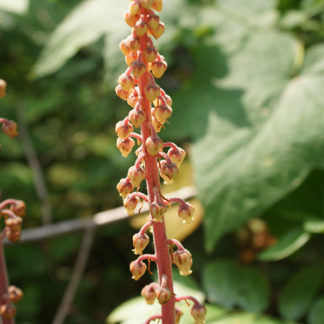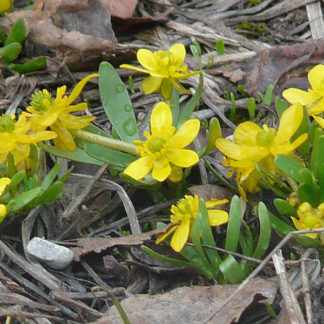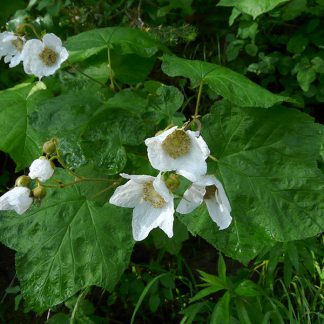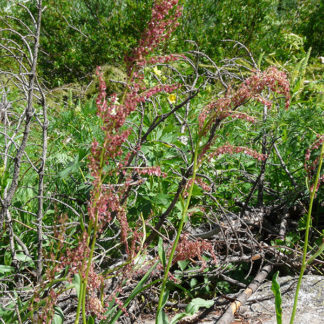clonal
Showing 97–108 of 136 results
-

Pterospora andromedea / woodland pinedrops
- sticky-haired, reddish brown plant; no chlorophyll
- nodding, yellow and pink flowers like upside-down urns
- unbranched stem with "invisible" scale-like leaves at base
- old, woody stalks with pumpkin-shaped capsules persist at least one season
- in pine or mixed conifer forests
-

Purshia tridentata / antelope bitterbrush
- small yellow, 5-petal flowers in early spring
- small shrub, often in large "clumps"
- leaves look like sagebrush (Artemesia tridentata)
-

Pyrola asarifolia / pink pyrola
- 4 to 25 nodding red (or pink) and white flowers in a loose raceme
- round petals, edges often curved down
- green style extends out of flower like elephant's trunk
- flower stems may be over a foot tall
- leaves are "liver" shaped or "ginger" shaped and shiny - round-ish but wider than long
-

Ranunculus glaberrimus / sagebrush buttercup
- one of the earliest spring flowers
- yellow flowers, ca. 1" across
- usually 5 shiny/waxy petals, numerous stamens
- short, mostly elliptical leaves
- in small to field-sized clumps
- very poisonous
-

Rubus parviflorus / thimbleberry
- raspberry-like shrub usually in a clump
- white flowers with many stamens, up to 2.5 inches diameter
- large, fuzzy maple-like leaves
- blooms in spring; red, raspberry-like fruit in the fall
-

Rumex acetosella / sheep sorrel
- long, vertical inflorescences... not compact or well "organized"
- female plants with red/maroon flowers; males with green/white flowers
- especially visible when seeds are ripe... red
- basal rosette of arrowhead shaped leaves
- disturbed areas, wastelands, poor sites
-

Sambucus nigra / common elderberry
- shrub or small tree blooming in late spring
- leaves opposite
- pinnately compound with up to 9 leaflets with serrated edges
- flowers are white, 5-petaled, in flat-topped clusters of clusters
- "berries" are red or dark blue/black in August; often drooping when mature
-

Scrophularia lanceolate / lanceleaf figwort
- teeny, snapdragon-like flowers
- flowers urn-shaped, mostly yellow, with red or green at the tips
- flowers look like they aren't yet opened
- flowers on elongated panicle at the top of a tall-ish plant
- opposite leaves like stinging nettle without the stingers
- up to 5 feet tall in full sun/partial shade
-

Scutellaria galericulata / marsh skullcap
- riparian zones and wetlands
- blue, trumpet shaped (legume) flowers; usually in pairs on same side of a stem
- flowers not at the top of the stems
- square stems, widely spaced opposite leaves; adjacent pairs at right angles
-

Senecio triangularis / arrowleaf ragwort
- leafy stems with arrow-shaped, coarse-toothed leaves
- often in large patches on moist soil
- clusters of yellow flower heads, each with 8-ish untidy ray florets
- numerous green involucral bracts, sometimes with black tips
- largest leaves occur mid-stem
-

Solidago canadensis / goldenrod
- large sprays of yellow flowers in late summer and fall
- often tall and in large colonies
- lance-shaped, toothed leaves
- mostly (but not always) in disturbed areas
-

Solidago missouriensis / Missouri goldenrod
- perennial herb, up to 40" tall
- inflorescence is a branching panicle with many (≥200) yellow flower heads
- involucres are ¼ long with 3 or 4 layers of narrow, pointed, hairless, yellow-green bracts
- leaves are thin and lanceolate, upright and rigid with prominent midribs
- upper leaves have pronounced but small teeth
Showing 97–108 of 136 results